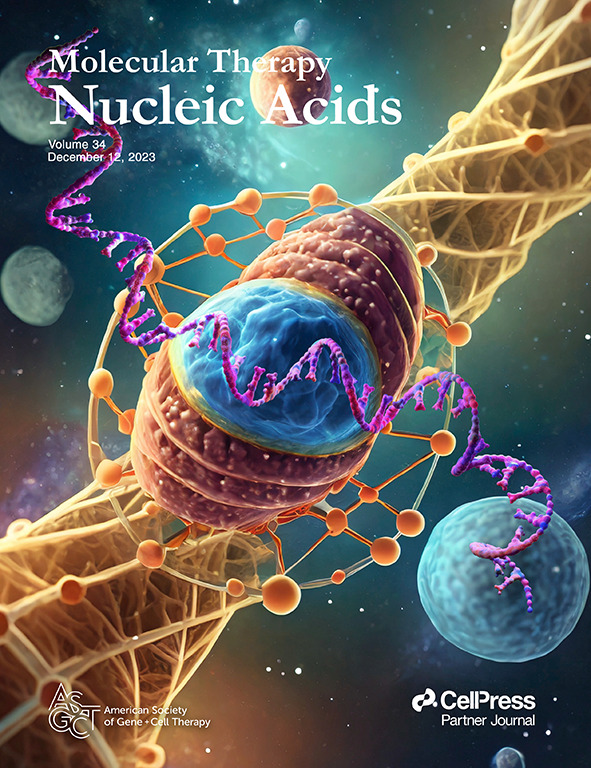局部应用与 CCL22 结合的适配体能抑制接触性过敏
IF 6.5
2区 医学
Q1 MEDICINE, RESEARCH & EXPERIMENTAL
引用次数: 0
摘要
过敏性接触性皮炎是一种常见的职业病,但治疗方法却很有限。趋化因子 CCL22 是趋化因子受体 CCR4 的配体,可引导免疫细胞迁移。研究表明,遗传性 CCL22 缺乏能有效改善接触性过敏(CHS)的过敏反应,CHS 是一种常用的过敏性接触性皮炎小鼠模型。为了对 CCL22 进行药理抑制,研究人员通过指数富集配体的系统进化(SELEX)生成了特异于小鼠 CCL22 的 DNA 配体。初步筛选出九种与 CCL22 结合的适配体,并进行了功能测试。29nt的DNA适配体AJ102.29m能有效抑制CCL22依赖的T细胞迁移,并且不会引起Toll样受体依赖的不良免疫激活。全身应用 AJ102.29m 能有效改善 CHS。此外,在皮肤上局部应用该合剂后,CHS 相关的过敏症状也有所减轻。对使用 AJ102.29m 处理过的皮肤进行的显微分析表明,该合道体能渗入表皮和真皮层。在抑制过敏反应方面,表皮涂抹乳膏中的适配体 AJ102.29m 与腹腔注射一样有效,这一发现为适配体在目前全身给药途径之外的治疗用途铺平了道路。本文章由计算机程序翻译,如有差异,请以英文原文为准。
Topical application of a CCL22-binding aptamer suppresses contact allergy
Allergic contact dermatitis is a prevalent occupational disease with limited therapeutic options. The chemokine CCL22, a ligand of the chemokine receptor CCR4, directs the migration of immune cells. Here, it is shown that genetic deficiency of CCL22 effectively ameliorated allergic reactions in contact hypersensitivity (CHS), a commonly used mouse model of allergic contact dermatitis. For the pharmacological inhibition of CCL22, DNA aptamers specific for murine CCL22 were generated by the systematic evolution of ligands by exponential enrichment (SELEX). Nine CCL22-binding aptamers were initially selected and functionally tested . The 29-nt DNA aptamer AJ102.29m profoundly inhibited CCL22-dependent T cell migration and did not elicit undesired Toll-like receptor-dependent immune activation. AJ102.29m efficiently ameliorated CHS after systemic application. Moreover, CHS-associated allergic symptoms were also reduced following topical application of the aptamer on the skin. Microscopic analysis of skin treated with AJ102.29m demonstrated that the aptamer could penetrate into the epidermis and dermis. The finding that epicutaneous application of the aptamer AJ102.29m in a cream was as effective in suppressing the allergic reaction as intraperitoneal injection paves the way for therapeutic use of aptamers beyond the current routes of systemic administration.
求助全文
通过发布文献求助,成功后即可免费获取论文全文。
去求助
来源期刊

Molecular Therapy. Nucleic Acids
MEDICINE, RESEARCH & EXPERIMENTAL-
CiteScore
15.40
自引率
1.10%
发文量
336
审稿时长
20 weeks
期刊介绍:
Molecular Therapy Nucleic Acids is an international, open-access journal that publishes high-quality research in nucleic-acid-based therapeutics to treat and correct genetic and acquired diseases. It is the official journal of the American Society of Gene & Cell Therapy and is built upon the success of Molecular Therapy. The journal focuses on gene- and oligonucleotide-based therapies and publishes peer-reviewed research, reviews, and commentaries. Its impact factor for 2022 is 8.8. The subject areas covered include the development of therapeutics based on nucleic acids and their derivatives, vector development for RNA-based therapeutics delivery, utilization of gene-modifying agents like Zn finger nucleases and triplex-forming oligonucleotides, pre-clinical target validation, safety and efficacy studies, and clinical trials.
 求助内容:
求助内容: 应助结果提醒方式:
应助结果提醒方式:


